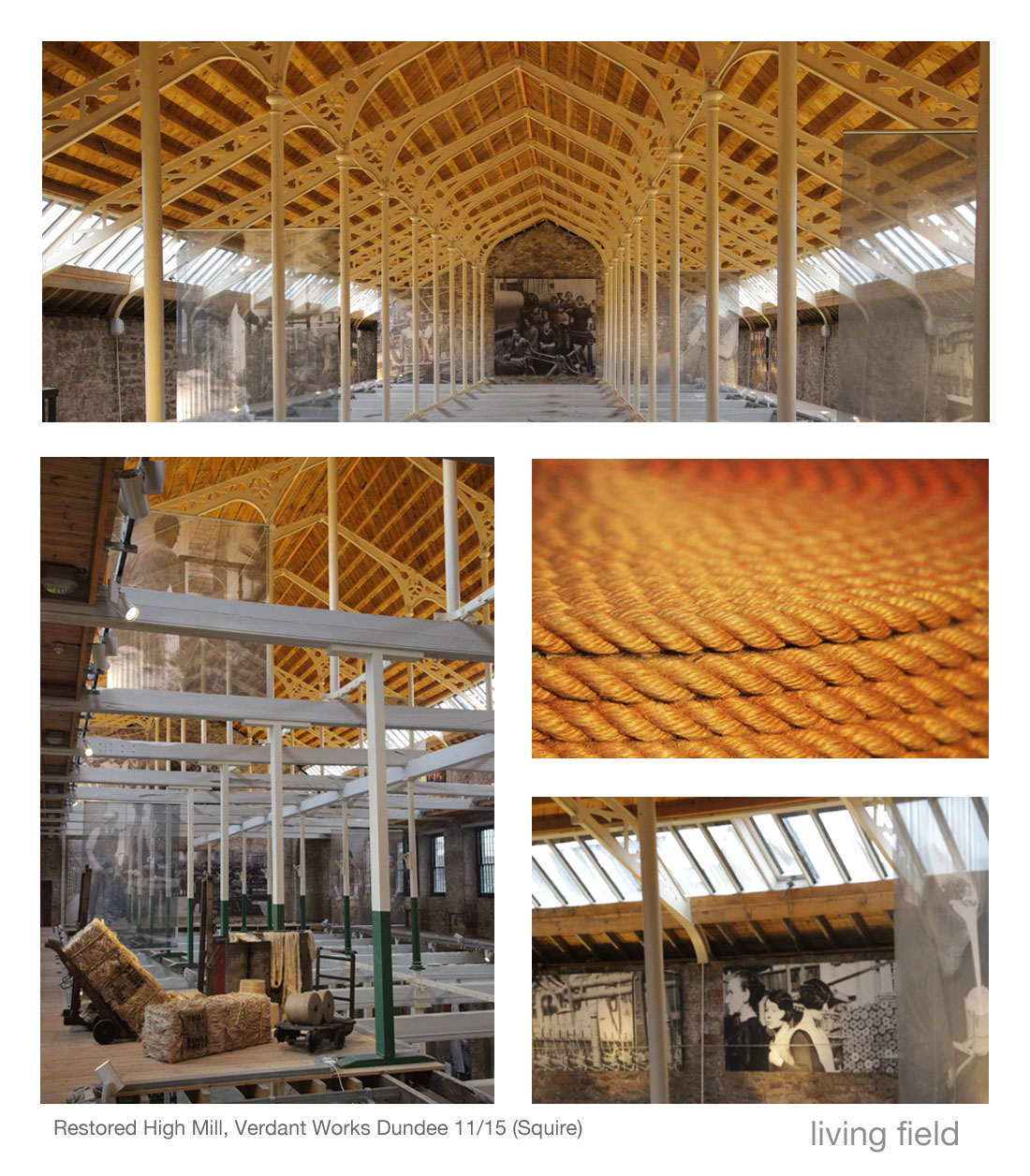The High Mill, derelict for some decades, has been restored at Verdant Works and is open to the public as part of the Verdant Works Museum, Dundee. This magnificent restoration reveals the skills in engineering, architecture and construction that arose with the industrial revolution. The restored ironwork is a superb sight while the roof timbers reflect the colour of jute fibre. See for yourself.
The name Verdant arises from the flax fields that used to grow in the area of the Mill, yet the flax disappeared many years ago. The museum tells of the changes in the textile industry from its beginning as a distributed home-based craft, cultivating flax and making yarn and linen cloth.
Local cultivation gave way to imported raw material. Then local production gave way to steam power and to industrial manufacture. Even this was out-competed in the 1800s as the industry turned to jute grown in India and Bangladesh. The main museum presents the story of jute.
The spaces created at High Mill are intended for exhibitions and education …. but they make you wonder, both at the engineering skills that created the building and the industry it served, and the often appalling conditions and treatment of the people who worked there.
Further
Background to the restoration and intended uses highmillproject.com/project
Before the transformation www.buildingsatrisk.org.uk/ref_no_3738
Dundee stv news update with photographs, drawings and images dundee/stv/tv
Visiting the Mill: Verdant Works Dundee
The Living Field’s web pages on Fibres, part of the 5000 Years – Plants project – describe local and global production of fibre plants, including flax and jute.

